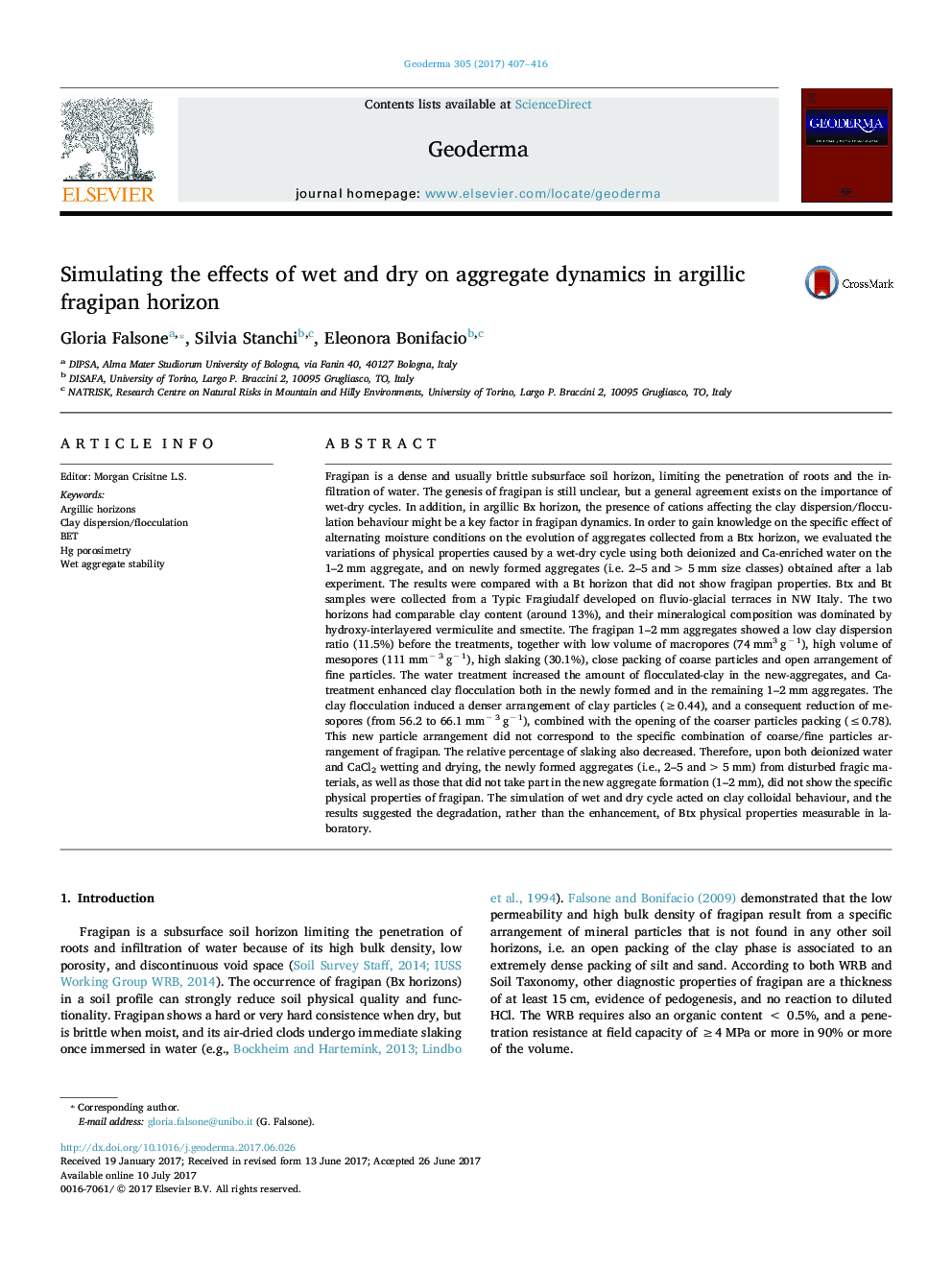| کد مقاله | کد نشریه | سال انتشار | مقاله انگلیسی | نسخه تمام متن |
|---|---|---|---|---|
| 5770309 | 1629412 | 2017 | 10 صفحه PDF | دانلود رایگان |

- In fragipan, physical properties changes induced by wetting/drying are studied in the lab.
- Water and CaCl2 wetting/drying promoted the enrichment of aggregates in flocculated-clay.
- Flocculation induced a denser arrangement of clay particles and reduction of mesopores.
- The new arrangement did not reflect the specific fragipan particle arrangement.
- Water and CaCl2 wetting/drying attenuated the fragipan physical characteristics measurable in laboratory.
Fragipan is a dense and usually brittle subsurface soil horizon, limiting the penetration of roots and the infiltration of water. The genesis of fragipan is still unclear, but a general agreement exists on the importance of wet-dry cycles. In addition, in argillic Bx horizon, the presence of cations affecting the clay dispersion/flocculation behaviour might be a key factor in fragipan dynamics. In order to gain knowledge on the specific effect of alternating moisture conditions on the evolution of aggregates collected from a Btx horizon, we evaluated the variations of physical properties caused by a wet-dry cycle using both deionized and Ca-enriched water on the 1-2 mm aggregate, and on newly formed aggregates (i.e. 2-5 and > 5 mm size classes) obtained after a lab experiment. The results were compared with a Bt horizon that did not show fragipan properties. Btx and Bt samples were collected from a Typic Fragiudalf developed on fluvio-glacial terraces in NW Italy. The two horizons had comparable clay content (around 13%), and their mineralogical composition was dominated by hydroxy-interlayered vermiculite and smectite. The fragipan 1-2 mm aggregates showed a low clay dispersion ratio (11.5%) before the treatments, together with low volume of macropores (74 mm3 gâ 1), high volume of mesopores (111 mmâ 3 gâ 1), high slaking (30.1%), close packing of coarse particles and open arrangement of fine particles. The water treatment increased the amount of flocculated-clay in the new-aggregates, and Ca-treatment enhanced clay flocculation both in the newly formed and in the remaining 1-2 mm aggregates. The clay flocculation induced a denser arrangement of clay particles (â¥Â 0.44), and a consequent reduction of mesopores (from 56.2 to 66.1 mmâ 3 gâ 1), combined with the opening of the coarser particles packing (â¤Â 0.78). This new particle arrangement did not correspond to the specific combination of coarse/fine particles arrangement of fragipan. The relative percentage of slaking also decreased. Therefore, upon both deionized water and CaCl2 wetting and drying, the newly formed aggregates (i.e., 2-5 and > 5 mm) from disturbed fragic materials, as well as those that did not take part in the new aggregate formation (1-2 mm), did not show the specific physical properties of fragipan. The simulation of wet and dry cycle acted on clay colloidal behaviour, and the results suggested the degradation, rather than the enhancement, of Btx physical properties measurable in laboratory.
101
Journal: Geoderma - Volume 305, 1 November 2017, Pages 407-416